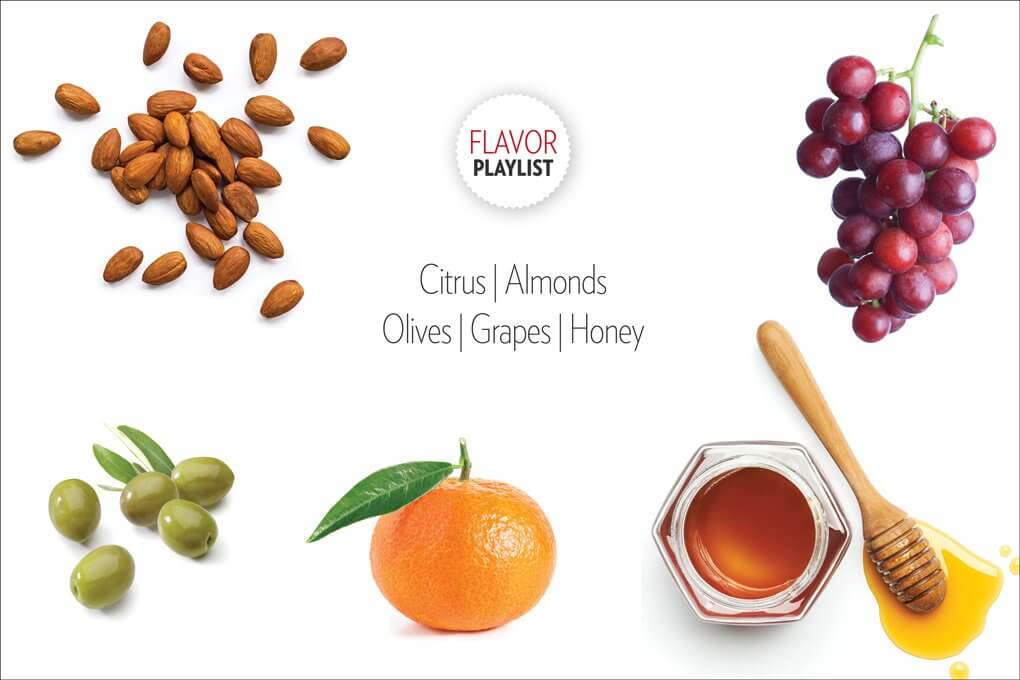
Estevan Jimenez
In his role as executive chef and culinary instructor at Rancho Cielo Youth Campus in Salinas, Calif., Estevan Jimenez provides culinary training for at-risk youth in Monterey County, Calif. Culinary arts is just one of Rancho Cielo’s many programs geared to help transform lives through learning new skills, on-the-job training and professional mentorship.
Prior to joining Rancho Cielo, Jimenez was corporate chef de cuisine for Aqua Terra Culinary in Pacific Grove, Calif. He also worked as executive sous chef at Ventana Inn & Spa in Big Sur, Calif., and chef de cuisine at the Monterey Bay Aquarium.
We tapped Jimenez for inspiration, asking him to share five go-to pantry items that help his mission of showing his students the vibrancy of culinary arts.
Citrus
Growing up in the San Joaquin Valley, citrus was something that I almost took for granted. I love the variety that it brings—different forms of sour, sweet and bitter, all wrapped up in each unique fruit.
I also love how the seasons overlap with other crops, leading to interesting combinations of flavors that only last for a short time. Some of my favorites are satsuma and pomegranate in the fall, orange and hard squash in the winter, and grapefruit and radish in the spring.
Almonds
They’re at the top of my list—easily my favorite food. I’m not sure if it’s because of their versatility or because they remind me of why I love food. They’re not only a great and healthy snack and salad garnish, but truly one of the most versatile ingredients. Used as flour, milk, butter, paste, extract, whole, raw, toasted—the list goes on.
When I was a child, my father built us a treehouse at the base of an almond tree in our backyard. The smell of the blossoms meant the weather was getting warmer and the days longer.
I once threw a green almond for my dog to fetch, and when I realized she was eating them green I thought I would try, too. This was the lightning that sparked my interest in food.
Olives
The variety of olives that are used for oil production and the blending of those oils is something I really appreciate. However, eating them is my favorite part—in all varieties and all curing methods. It can be an ingredient that contributes earthy, sweet, salty or grassy qualities. It can be the main attraction or play a supporting role.
The Castelvetrano tastes creamy and fatty—almost like an avocado—while the Cerignola is crisp and buttery, but large enough to stuff. I used to work for a chef who loved Picholine olives, and I learned to appreciate their anise quality.
But the king for me is the California Mission olive. Although I loved putting black olives on my fingers as a kid, now I prefer the green ones cured in the brine.
Grapes
Grapes make the list because of their versatility. Juice, wine, whole for eating and raisins are the most obvious, but I really like to use them in savory cooking, too—black grapes with balsamic for glazing meats, verjus for deglazing and making dressings, sautéed with sweetbreads, and baking whole into focaccia, or roasting in a wood-fired oven with shaved potatoes. Plus, the many varieties will keep you from ever getting bored.
Honey
It’s the all-time best and most natural sweetener. I like using different varieties of honey for different tasks—from salad dressings and ice cream to braised items. I even like using it in its purest form: still in the honeycomb. When I think of sweet, my mind goes straight to honey.











